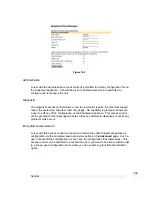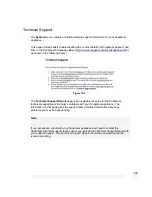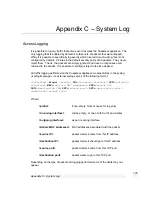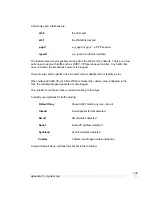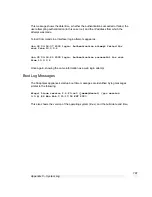
Appendix A – IP Address Ranges
167
Appendix A – IP Address Ranges
IP ranges are fields that allow multiple IP addresses to be specified using a shorthand
notation. Four distinct forms of range are acceptable:
1.
a.b.c.d
2.
a.b.c.d-e
3.
a.b.c.d-e.f.g.h
4.
a.b.c.d/e
The first is simply a single IP address. Thus where ever a range is permitted, a single IP
address is too.
The second specifies range of IP address from
a.b.c.d
to
a.b.c.e
inclusive, i.e. you are
specifying a range within a C class network or subnet. For example,
192.168.5.15-30
includes 16 IP addresses.
The third form allows the address range to span network and subnet boundaries. All
addresses including and between the two specified IP addresses are included in the
range. For example,
192.168.5.190-192.168.6.56
includes 123 IP addresses.
The final form allows the range to be specified to cover an entire subnet. The value of
e
specified the number of fix bits in the IP address range. Thus,
a.b.c.d/24
covers the
entire C class network/subnet
a.b.c.0
and is equivalent to specifying the range as
a.b.c.0-255
(the value for
d
here can be anything as it is ignored). A range of
a.b.c.d/32
is equivalent to the single IP address
a.b.c.d
. For example,
192.168.12.150/26
is
equivalent to the range
192.168.12.128-191
and it includes 64 IP addresses.







